Economy
Wrapping Up Canadian Energy 2023 – Prosperity, Power Struggles, Pipelines, EV Promises and “Pie in the Sky” Politics
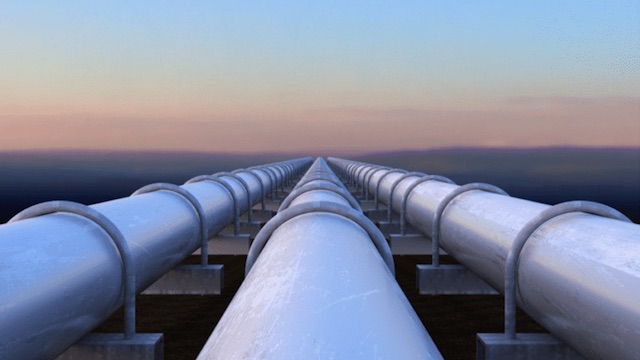
From EnergyNow Media
By Deidra Garyk
2023 was an optimistic year in the Canadian oil patch. The +15 walkway system in downtown Calgary has been buzzing with the energy of people hurrying to business meetings and networking events.
Some of those scurrying about were headed to talk multi-billion-dollar merger and acquisition (M&A) deals that the patch continued to experience throughout the year. Traditional oil companies also bought alternative energy and carbon tech companies. Carbon capture, utilization and storage (CCUS) was the investment decision of the year.
Oil and gas prices remained relatively high. Not great, but not in the toilet like the dark years of 2015 to 2021. That meant government coffers filled, easing some of the debt burden accumulated during COVID. Oil and gas companies, producers and the many service providers who support the production, were able to continue paying down debt and providing returns to patient shareholders.
Canadian majors Suncor, Cenovus, and Enbridge went through leadership changes at the top. I wish these men success and courage. They are going to need it to embolden pragmatism at all levels of government.
The Canadian federal government continues to be all-in on climate and green energy, seemingly to the exclusion of traditional, reliable energy sources. Although, since climate change has taken a backseat to affordability and energy security for the voting public – the only people politicians really care about – the Liberals have had to rebrand some programs to get buy-in.
One example is renaming the “Just Transition” the Sustainable Jobs Plan. Other than the name, not much has changed. There is still a push for unionized, non-oil and gas jobs.
The feds “invested” (their word, not mine) billions of dollars in EV battery plants, continuing to go all-in on 100 percent EV car sales in twelve years. Senior bureaucrats at Transport Canada even touted the nearness of EV heavy-duty commercial transportation and equipment. (Someone should tell them it will not work well in remote locations with no charging infrastructure.) Energy and Natural Resources Minister Jonathan Wilkinson lauded the day when agricultural equipment goes all electric, fantasizing about the economic boon that will bring. (Someone else should tell him it will not be experienced by farmers who have to spend their hard-earned dollars on equipment replacements.)
Joe Biden visited Ottawa in March. I happened to be there for a conference, so I got to experience the pomp and circumstance first-hand. I have never seen so much security, and I have travelled to places under military control and lived in a country that remains perpetually under the threat of foreign invasion.
Biden’s motorcade is a long, emissions-belching row of vehicles. I did not see any EVs. It includes two “Beasts” (one used as a decoy while the other transports the President), an ambulance, and several tricked-out SUVs. It is quite a spectacle.
As expected, topping the list of topics on the visit’s agenda, President Biden and Prime Minister Trudeau talked about energy and climate, as outlined in their joint statement.
Global sustainability reporting standards were released in June and come into effect January 1, 2024. Publicly traded companies are waiting for Canada to release jurisdiction-specific regulations to understand the magnitude of what will be required. In the Fall Economic Update, released November 22, the feds said rules will be put in place to extend mandatory climate reporting to private companies. That is a big hint at what all companies should expect, at a minimum.
You can listen to my podcast on the subject with energy analyst Dr. Tammy Nemeth here.
On the topic of climate, Bill S-243, An Act to enact the Climate-Aligned Finance Act and to make related amendments to other Acts passed second reading in the Senate in June. You may think this is just some boring Senate bill, but oil and gas boards and employees need to be aware of it.
The bill aims to restrict investment in hydrocarbons, forces companies to set climate commitments, and dictates who has to be part of a company’s board of directors. Worse, section 13(1) Appointment – restriction outlines who cannot be a board member – anyone who works in or owns shares in a fossil fuel company.
It goes as far as to include: “And whereas investment in energy efficiency, clean energy and clean technologies and the incentivization of innovation and behavioural change must replace investments in greenhouse-gas-emission-intensive activities for effective action against climate change.” It targets “fossil fuel activity” in the definition of “emissions-intensive activities”.
Alignment with climate commitments requires that companies:
- take into consideration vulnerable groups, communities and ecosystems, including the biodiversity of those ecosystems,
- make decisions based on equity and the best available science and
- do not promote, foster or exacerbate food insecurity or inequalities in society; and
- do not cause significant harm to social and environmental obligations recognized by Canada.
This bill should trouble any rational person, and it is not getting enough attention. It ramps up climate hysteria and enshrines it into all financial decision making. It is ideological to its core.
I encourage you to read the bill here.
Fortunately, two major, necessary egress projects – Coastal GasLink and Trans Mountain – are well underway before Bill S-243 can stop them. Coastal GasLink reached major milestones of 100 percent pipeline installation and mechanical completion, ahead of schedule. Unfortunately, the federally owned Trans Mountain pipeline has continued to experience delays and a cost increase to $30.9 billion. Although, it was about 80 percent complete in March and expected to be in service in the first quarter of 2024, the project has been delayed due to issues over the route and may not be completed until the end of 2024.
Canada’s summer wildfire season had environmental activists hot and bothered, blaming one thing, and one thing only – climate change!
Calgary hosted the 24th World Petroleum Congress and world energy leaders in September. The torch was passed on to Saudi Arabia to host next. Based on their booth, it will be an extravaganza that will undoubtedly proudly display their oil and gas development. Energy and Natural Resources Minister Jonathan Wilkinson dutifully kept to the Liberal’s script and was challenged to mention the words “oil” and “gas” during his speech at the World Petroleum Congress. This caused the ire of Alberta Premier Danielle Smith, who has had it with the feds’ attitude towards oil and gas.
She has now invoked the Alberta Sovereignty Act in an attempt to prevent the federal government from being able to enact the Clean Electricity Standard by 2035. She has taken a lot of heat for it, but Saskatchewan’s Premier Scott Moe did it first with the colloquially named Saskatchewan First Act. When adversarial Environment and Climate Change Canada Minister Steven Guilbeault threatened to criminalize the use of coal-fired power generation past 2030, Moe puffed out his chest and said, “come get me!”
For all the partisan naysayers attacking the Premiers, I recommend reading Electricity Canada’s response to the Clean Electricity Regulations. It is emotionless and objective, and it sides with the Premiers.
Good thing there is serious discussion about the electricity grid and reliability happening in the Edmonton Legislature because Alberta’s grid operator AESO has issued several warnings in the last year, on both hot and cold days. This has me impatiently waiting for the 2,700 megawatts of new natural gas-powered generation to come on in 2024.
November was all about the carbon tax fight. The feds doubled down on the importance of carbon taxes in the fight against global warming, but not in regions where their sitting MPs risk losing their seats (i.e. their jobs) in the next election. If you think it was not political, you are fooling yourself. They are still fighting over the applicability of a tax on farmers. As someone who eats, I would like it removed to keep the cost of food down.
Premier Moe will not charge Saskatchewan residents carbon tax on natural gas and electricity used to heat homes. This seems reasonable considering that it gets really, really, really cold in Saskatchewan for many days in the winter and reliable energy is a must.
In a hotter region of the world, Dubai, United Arab Emirates hosted COP28 in December. It is the twenty eighth UN climate conference, and yet we appear no closer to solving the thing they say is a crisis – rising emissions. The globe reached the height of emissions in 2023, even though coal use is down and renewable energy capacity and investment is up, up, up, according to the International Energy Agency.
As expected, Canada made various expensive pledges. Minister Guilbeault bounces to the podium for a photo op, drops a climate pledge or two, and the rest of us are left trying to figure out how to meet the commitment. The most contentious for Alberta and Saskatchewan was the oil and gas emissions cap that has been called a de facto production cap.
GEOPOLITICS
With energy security remaining a priority for citizens, nuclear is no longer a bad word. Countries and regions are expanding existing nuclear infrastructure and there is increasing public acceptance for small modular reactors. The false fear tactics used by the anti-nuclear activists have finally been shown for what they are – exaggerated and untrue.
The BRICS alliance expanded with the addition of six new members: Iran, Saudi Arabia, Egypt, Ethiopia, Argentina, and the United Arab Emirates.
Not only are the BRICS nations population and economic power players, they hold the keys to unlocking vast reserves of reliable energy. Total oil production from BRICS nations will be between 40-45 percent of global oil production, more than OPEC’s 35-40 percent. In addition, the members hold vast reserves of the minerals needed for any future energy transformation.
Forty other countries applied to join, demonstrating an interest in the group. Western leaders and NGOs would be wise to pay attention to the growing influence of the BRICS, even if they dislike some of the members.
BRICS is my geopolitical story of the year as it continues to disrupt global energy markets. In 2022, India increased purchases of discounted Russian oil by forty percent. This year, India purchased oil from the United Arab Emirates in rupees, their local currency. These are two examples of the shifts that are happening but are seemingly ignored by the West.
Overall, it appears that pragmatism and realism are influencing political energy decisions, and 2024 is expected to be another positive year for the Canadian oil patch.
All the best for the new year. May you enjoy peace and prosperity.
About Deidra Garyk
Deidra Garyk has been working in the Canadian energy industry for almost 20 years. She is currently the Manager, ESG & Sustainability at an oilfield service company. Prior to that, she worked in roles of varying seniority at exploration and production companies in joint venture contracts where she was responsible for working collaboratively with stakeholders to negotiate access to pipelines, compressors, plants, and batteries.
Outside of her professional commitments, Deidra is an energy advocate and thought leader who researches, writes, and speaks about energy policy and advocacy to promote balanced, honest, fact-based conversations.
Brownstone Institute
Enough With These Dangerous Calculations
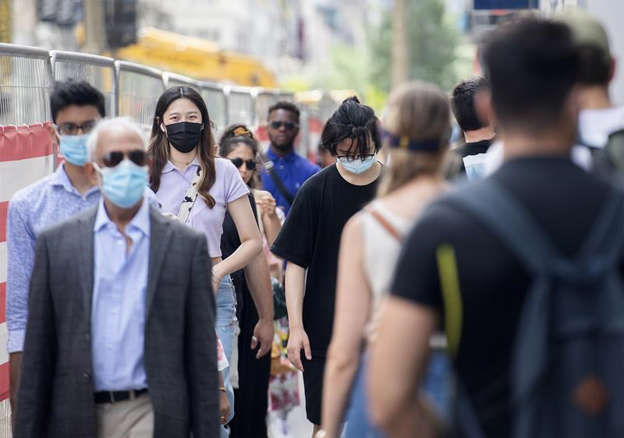
From the Brownstone Institute
BY
Now that there is more open talk about vaccine injury, we are continually assured that overall these vaccines were worth it even so. The thought always occurs: it has not been worth it for the injured. Nor is their injury lessened by the knowledge that others were helped, if they were.
What precise metric are we going to use to determine costs and benefits population-wide? Many millions were forced to take experimental injections that they did not want nor need. Many were injured and with no chance of compensation. This is gravely unjust. You don’t need to take recourse to fancy philosophical conjectures (The Trolley Problem, The Lifeboat Dilemma, The Fat Man on the Bridge, etc.) to do the utilitarian calculation.
And yet, such calculations are precisely what the defenders of society-wide pandemic interventions are citing as evidence that we can and should do it again. The costs are high, they now admit, but worth the benefit.
Well, maybe not. It’s hard to say but they will keep working on it. They will decide in due course.
This is the argument of Professor John M. Barry. His book on the 1918 flu pandemic kicked off the entire pandemic-planning industry once George W. Bush read the book flap in 2005. Barry’s new article in the New York Times raises alarms about the Avian Bird Flu, the same as the whole pandemic industry is doing right now, and makes the argument that the interventions last time were just great overall.
“Australia, Germany and Switzerland are among the countries that demonstrated those interventions can succeed,” he claims even though all three countries have been torn apart by the pandemic response that is still rocking politics and showing itself in economic decline “Even the experience of the United States provides overwhelming, if indirect, evidence of the success of those public health measures.”
What is that indirect evidence? This you won’t believe: that flu deaths dramatically fell. “The public health steps taken to slow Covid contributed significantly to this decline, and those same measures no doubt affected Covid as well.”
That’s a heck of a thing. If you burn down the house to kill the rats and fail, but happen to kill the pets, surely you have some bragging rights there.
There is indeed a big debate on why seasonal flu seems to have nearly disappeared during the pandemic. One theory is simple misclassification, that flu was just as present as always but labeled Covid because PCR tests pick up even slight elements of the pathogen and financial incentives drove one to displace the other. There is surely an element of this.
Another theory relates to crowding out: the more serious virus pushes aside the less serious one, which is an empirically testable hypothesis.
A third explanation might in fact be related to interventions. With vast numbers staying home and the banning of gatherings, there was indeed less opportunity for pathogenic spread. Even if granting that is true, the effect is far from perfect, as we know from the failure of every attempt to achieve zero Covid. Antarctica is a good example of that.
That said, and even postulating this might be correct, there is nothing to prevent the spread among the population after opening except with even worse results because immune systems are degraded for lack of exposure.
Barry concedes the point but says “such interventions can achieve two important goals.” The first is “preventing hospitals from being overrun. Achieving this outcome could require a cycle of imposing, lifting and reimposing public health measures to slow the spread of the virus. But the public should accept that because the goal is understandable, narrow and well defined.”
Fine, but there is a major glaring error. Most hospitals in the US were not overrun. There is even a genuine question about whether and to what extent New York City hospitals were overrun but, even if they were, this had nothing to do with hospitals in most of the country. And yet the grand central plan closed them all for diagnostics and elective surgeries. In major parts of the country, parking lots were completely empty and nurses were furloughed in more than 300 hospitals.
Overall, that scheme (and who imposed this?) didn’t work too well.
The second supposed benefit you can predict: shutting down buys time “for identifying, manufacturing and distributing therapeutics and vaccines and for clinicians to learn how to manage care with the resources at hand.” This is another strange statement because authorities actually removed therapeutics from the shelves all over the country even though physicians were prescribing them.
As for the supposed vaccine, it did not stop infection or transmission.
So that scheme didn’t work either. There is also something truly cruel about using compulsory methods to preserve the population’s immunological naïveté in anticipation of a vaccine that may or may not work and may or may not cause more harm than good. And yet that is precisely the plan.
The most alarming part of Barry’s article, even aside from his incorrect claim that masks work, is this statement: “So the question isn’t whether those measures work. They do. It’s whether their benefits outweigh their social and economic costs. This will be a continuing calculation.”
Again we are back to benefit vs costs. It’s one thing for a person confronting a true moral or personal difficulty to make that calculation and live with the consequences. Every philosophical problem listed above – Trolly Cars and Lifeboats – involves personal choices and single decision-makers. In the case of pandemic planning and response, we are talking about groups of intellectuals and bureaucrats making decisions for the whole of society. In the last go-round, they made these decisions for the entire world with catastrophic results.
Many hundreds of years ago and following, the Western mind decided that giving such power to elites was not a good idea. The “continuing calculation” about what costs and benefits are experienced by billions of people from compulsory impositions is not something we should risk, not even with AI (which Barry says will solve the problems next time). Instead, we generally decided that a presumption of freedom is a better idea than empowering a small elite of scientists with the power to make “continuing calculations” for our supposed benefit.
Among many problems with the scientistic scheme for elite rule in the realm of infectious disease is that the population as a whole has no way to evaluate schemes and claims made to them by the government itself. They told us terrible population-wide death would come from Covid but it turned out to be exactly what others said back in February 2020; a disease impactful mainly on the aged and infirm.
Similarly, with the bird flu, we’ve been through a quarter century of claims that half of humanity could die from it. So far, every jump from animals to humans has resulted in reparable maladies like conjunctivitis.
But let’s say the bird flu really does get bad. Should the scientists who ruled us last time be trusted to do it again? That’s Barry’s plea: he demands “trust in government.” At the same time, he wants government to have the power to censor dissent. He falsely claims that last time, “there was no organized effort to counter social media disinformation” despite vast evidence of exactly this.
More information is actually what we need, especially from dissidents. For example, Barry celebrates that dexamethasone worked against Covid. But he fails to point out that the “experts” said in February 2020 that dexamethasone should not be used. Indeed, if you followed the Lancet, you would not have used them at all. In other words, Barry’s article refutes itself simply by showing the experts were desperately wrong in this case.
And, honestly, he knows this. Every bit of it. I have no doubt that if we met for cocktails, he would agree with most of this article. But he would also quickly point out that, after all, the New York Times commissioned the article so he can only say so much. He is merely being strategic, don’t you know?
This is the problem we face today with nearly all ruling-class intellectuals. We don’t actually disagree that much on the facts. We disagree on how much of the facts we are in a position to admit. And this puts Brownstone in a very awkward position of being a venue to say publicly what most people in the know say only privately. We do it because we believe in doing so.
All of which underscores the more general point: government and its connected scientists simply cannot be trusted with this kind of power. The last experience illustrates why. We forged our societies to have laws and guaranteed liberties that can never be taken away, not even during a pandemic. It is never worth using the power of the state to ruin lives to fulfill anyone’s abstract vision of what constitutes the greater good.
Economy
Prime minister’s misleading capital gains video misses the point
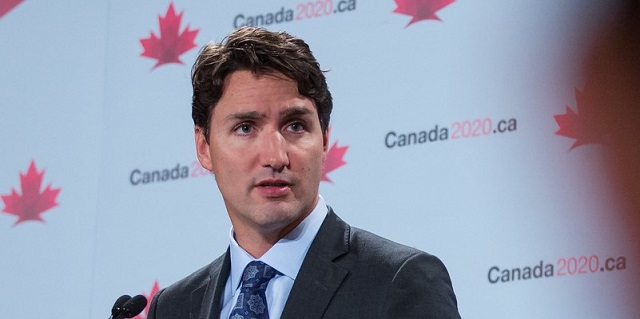
From the Fraser Institute
By Jake Fuss and Alex Whalen
According to a 2021 study published by the Fraser Institute, 38.4 per cent of those who paid capital gains taxes in Canada earned less than $100,000 per year, and 18.3 per cent earned less than $50,000. Yet in his video, Prime Minister Trudeau claims that his capital gains tax hike will affect only the richest “0.13 per cent of Canadians”
This week, Prime Minister Trudeau released a video about his government’s decision to increase capital gains taxes. Unfortunately, he made several misleading claims while failing to acknowledge the harmful effects this tax increase will have on a broad swath of Canadians.
Right now, individuals and businesses who sell capital assets pay taxes on 50 per cent of the gain (based on their full marginal rate). Beginning on June 25, however, the Trudeau government will increase that share to 66.7 per cent for capital gains above $250,000. People with gains above that amount will again pay their full marginal rate, but now on two-thirds of the gain.
In the video, which you can view online, the prime minister claims that this tax increase will affect only the “very richest” people in Canada and will generate significant new revenue—$20 billion, according to him—to pay for social programs. But economic research and data on capital gains taxes reveal a different picture.
For starters, it simply isn’t true that capital gains taxes only affect the wealthy. Many Canadians who incur capital gains taxes, such as small business owners, may only do so once in their lifetimes.
For example, a plumber who makes $90,000 annually may choose to sell his business for $500,000 at retirement. In that year, the plumber’s income is exaggerated because it includes the capital gain rather than only his normal income. In fact, according to a 2021 study published by the Fraser Institute, 38.4 per cent of those who paid capital gains taxes in Canada earned less than $100,000 per year, and 18.3 per cent earned less than $50,000. Yet in his video, Prime Minister Trudeau claims that his capital gains tax hike will affect only the richest “0.13 per cent of Canadians” with an “average income of $1.4 million a year.”
But this is a misleading statement. Why? Because it creates a distorted view of who will pay these capital gains taxes. Many Canadians with modest annual incomes own businesses, second homes or stocks and could end up paying these higher taxes following a onetime sale where the appreciation of their asset equals at least $250,000.
Moreover, economic research finds that capital taxes remain among the most economically damaging forms of taxation precisely because they reduce the incentive to innovate and invest. By increasing them the government will deter investment in Canada and chase away capital at a time when we badly need it. Business investment, which is crucial to boost living standards and incomes for Canadians, is collapsing in Canada. This tax hike will make a bad economic situation worse.
Finally, as noted, in the video the prime minister claims that this tax increase will generate “almost $20 billion in new revenue.” But investors do not incur capital gains taxes until they sell an asset and realize a gain. A higher capital gains tax rate gives them an incentive to hold onto their investments, perhaps until the rate is reduced after a change in government. According to economists, this “lock-in” effect can stifle economic activity. The Trudeau government likely bases its “$20 billion” number on an assumption that investors will sell their assets sooner rather than later—perhaps before June 25, to take advantage of the old inclusion rate before it disappears (although because the government has not revealed exactly how the new rate will apply that seems less likely). Of course, if revenue from the tax hike does turn out to be less than anticipated, the government will incur larger budget deficits than planned and plunge us further into debt.
Contrary to Prime Minister Trudeau’s claims, raising capital gains taxes will not improve fairness. It’s bad for investment, the economy and the living standards of Canadians.
Authors:
-
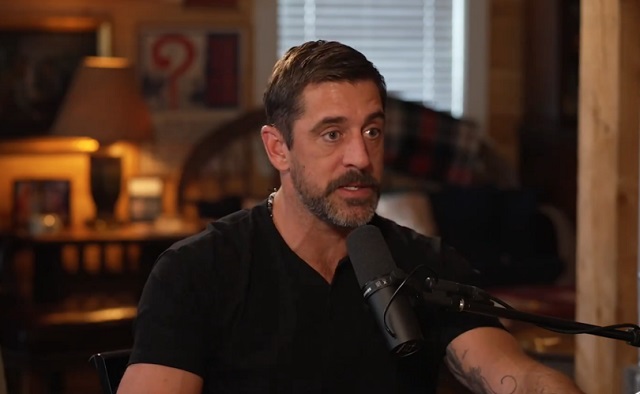
 COVID-192 days ago
COVID-192 days agoTucker Carlson and NFL star Aaron Rodgers discuss Bill Gates, COVID-19, US Deep State
-
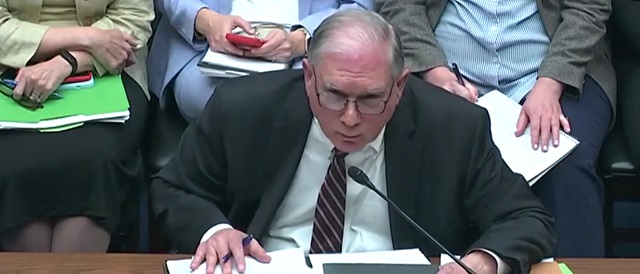
 COVID-191 day ago
COVID-191 day agoTop Fauci Aide Allegedly Learned To Make ‘Smoking Gun’ Emails ‘Disappear,’ Testimony Reveals
-
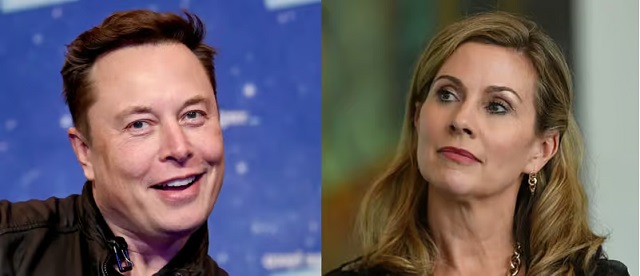
 Brownstone Institute15 hours ago
Brownstone Institute15 hours agoMusk Wins Latest Censorship Battle in Australia
-

 Opinion2 hours ago
Opinion2 hours agoUK set to ban sex ed for young children amid parental backlash against LGBT indoctrination
-

 Economy2 days ago
Economy2 days agoPrime minister’s misleading capital gains video misses the point
-

 COVID-191 day ago
COVID-191 day agoThe Vials and the Damage Done: Canada’s National Microbiology Laboratory Scandal, Part II
-

 Brownstone Institute15 hours ago
Brownstone Institute15 hours agoEnough With These Dangerous Calculations
-
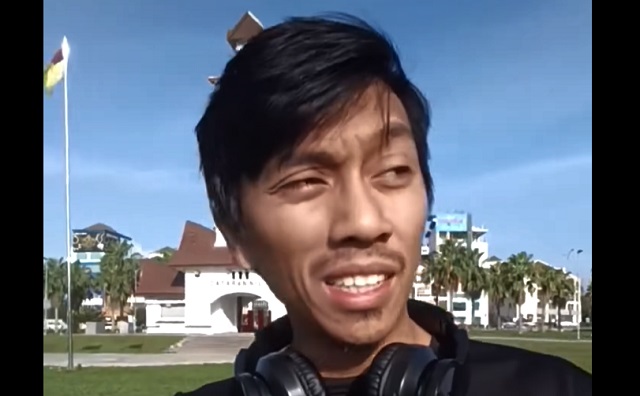
 COVID-195 hours ago
COVID-195 hours agoMalaysian doctor goes viral after apologizing for administering COVID shots











